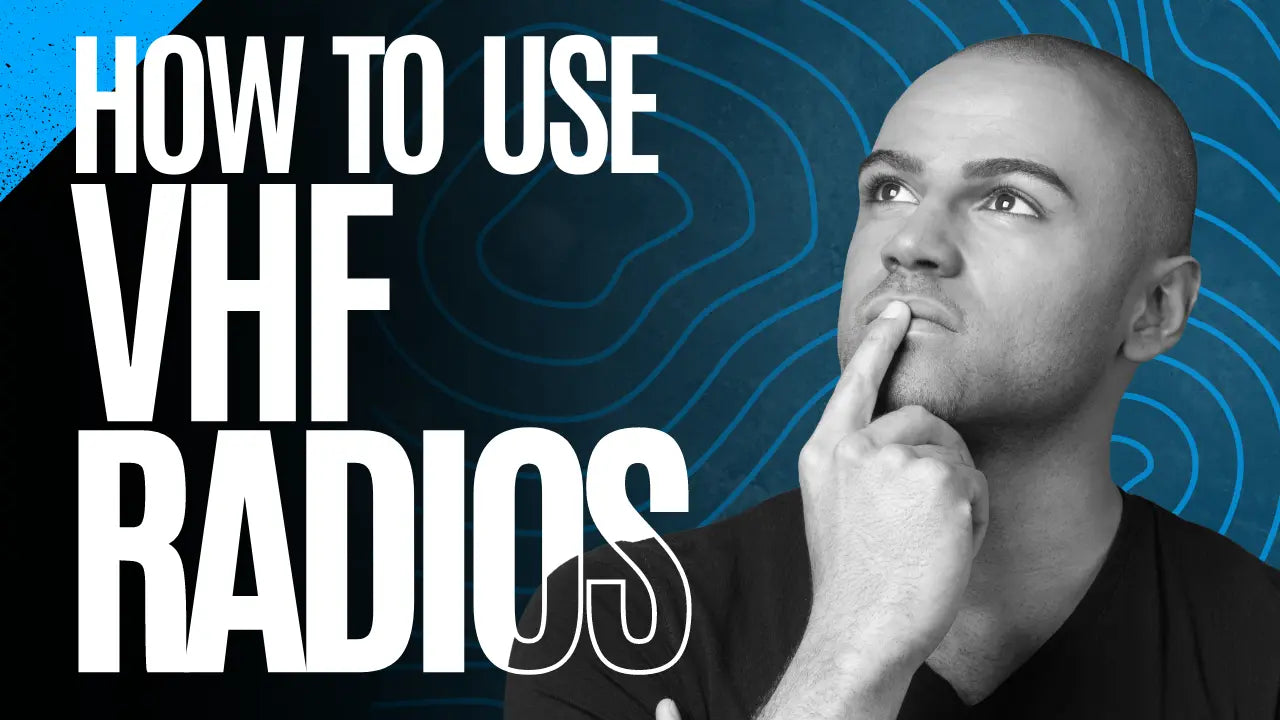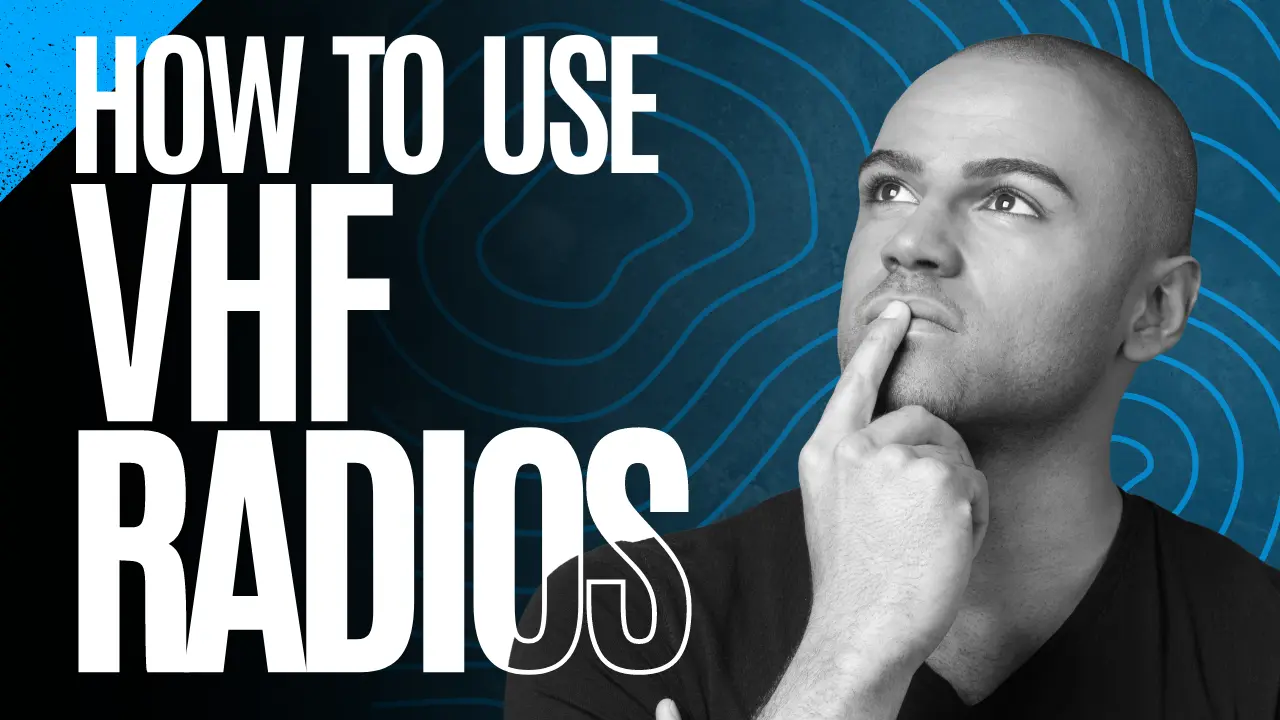VHF radios are a widely used technology with a variety of applications. In this FAQ blog, we’ll explore the common uses for VHF radios, making it easy for you to understand their importance and functionality.
What Are VHF Radios?
VHF radios, or Very High Frequency radios, operate in the frequency range of 30 MHz to 300 MHz. They are known for their ability to transmit over long distances without the need for satellite or cellular networks.
These radios are highly valued in various sectors for their reliability and effectiveness in communication. VHF radios use line-of-sight transmission, meaning the signal travels in a straight path from the transmitter to the receiver, which is ideal for clear and uninterrupted communication. Interested in learning the difference between UHF & VHF? Click Here
The robust design and functionality of VHF radios have made them indispensable in settings where reliable communication is crucial. They are often praised for their durability and ability to function under harsh conditions, making them suitable for both professional and recreational use.
Moreover, VHF radios come in various models, including handheld and fixed-mount units, which cater to different user needs. The choice between these models usually depends on the specific communication requirements and environmental conditions in which the radios will be used.
Marine Communication
One of the most common uses for VHF radios is marine communication. Boaters and mariners rely on VHF radios for communication with other vessels, marinas, and coast guard services. These radios are essential for safety at sea.
Marine VHF radios are designed to operate in the marine band of frequencies, typically between 156-174 MHz. This allows for clear and reliable communication on the water, which is particularly important for coordination during docking, races, and emergency situations.
Many boaters use VHF radios to receive weather updates, which are crucial for safe navigation. These radios can also transmit distress signals that alert the coast guard or nearby ships in case of emergencies, ensuring timely assistance and support.
It’s essential to know how to use a VHF radio, especially in critical situations. Proper usage includes tuning to the right channels and understanding various call protocols to ensure effective communication.
The integration of Digital Selective Calling (DSC) in modern VHF radios has further enhanced their utility. DSC allows for automated distress alerts and direct communication, which is particularly valuable for safety at sea.
Emergency Services
VHF radios are crucial for emergency services, including police, fire departments, and search and rescue teams. They provide reliable communication in situations where other forms of communication might fail.
These radios are often used in operations where immediate and clear communication is vital to coordinate efforts and ensure safety. For example, during a natural disaster, VHF radios can maintain communication lines when cellular networks are down or overloaded.
Emergency responders also appreciate the ease of use and durability of VHF radios. Their ability to withstand harsh environments and operate under tough conditions makes them a reliable tool in critical situations.
Additionally, VHF radios’ capability to integrate with other communication systems ensures seamless communication across various agencies and teams, which is essential for large-scale emergency operations.
Aviation Communication
In aviation, VHF radios are used for communication between air traffic control and pilots. They ensure that aircraft can navigate safely and efficiently, making them a key component of air travel.
The clarity and range of VHF radios make them ideal for aviation communication, where precise and quick exchanges of information are necessary. Pilots use these radios to receive instructions regarding flight paths, weather updates, and landing protocols.
VHF radios are also equipped with features that help in maintaining contact with ground control even during adverse weather conditions, thus ensuring continuous communication and enhancing overall flight safety.
Moreover, the use of standardized frequencies across the aviation industry ensures that all aircraft, regardless of their origin, can communicate effectively with air traffic controllers and other aircraft, which is critical for aviation safety.
Modern VHF radios in aviation often come with additional functionalities like GPS integration that further aid in navigation and safety, making them indispensable tools for pilots and air traffic controllers alike.
Amateur Radio
Many hobbyists and amateur radio operators use VHF radios for personal communication and experimentation. These radios allow for a wide range of activities, from casual chatting to emergency communication during disasters.
Amateur radio enthusiasts, also known as ‘ham radio operators,’ often use VHF frequencies to connect with other hobbyists over long distances. This can involve setting up repeaters to extend the range of their communication.
Amateur VHF radios often come with features that allow users to experiment with different modes of communication, including voice, text, and even digital data transmission. This versatility makes them a popular choice among hobbyists.
In many cases, amateur radio operators provide invaluable support during emergencies. Their ability to set up communication networks quickly and efficiently can be crucial when conventional communication systems are down.
Amateur VHF radios are also used in community events and public service activities. For instance, many operators offer their services during marathons, parades, and other large gatherings to help coordinate logistics and ensure public safety.
Land Mobile Radio Systems
VHF radios are also employed in land mobile radio systems, which are used by businesses and public safety organizations for coordination and communication. These systems are often seen in industries like construction, transportation, and utilities.
In construction sites, for instance, VHF radios facilitate clear and immediate communication between workers and supervisors. This helps in coordinating tasks, ensuring safety protocols, and improving overall efficiency.
The transportation industry benefits from VHF radios by using them to maintain contact between drivers and dispatch operators. This is essential for route management, scheduling, and handling any issues that arise during travel.
Utility companies often use VHF radios to manage field operations. Workers can quickly report issues, request assistance, and update statuses, which is crucial for maintaining essential services without interruptions.
For businesses looking for reliable communication tools, MOTOTRBO radios offer a balance of features and performance.
Wrapping Up: The Versatility of VHF Radios
VHF radios are incredibly versatile tools that serve multiple industries and recreational activities. From marine communication to emergency services, they play a vital role in maintaining safety and efficiency. Understanding the common uses of VHF radios can help you determine how they might be beneficial in your particular situation.


